Energy of Particles (GCSE Physics)
Energy of Particles
Energy of Particles
- Particles have kinetic (KE) and potential (PE) energy. In a system, particles mainly have 2 different types of energy. Kinetic energy allows the particles to move. Potential energy is the energy that keeps the particles in their positions.
- Internal energy is the total KE and PE. In the system, if you combine all the kinetic energy and potential energy, and this will give you a value for the internal energy.
Internal energy is the total kinetic energy and potential energy of all the particles (atoms and molecules) that make up a system.
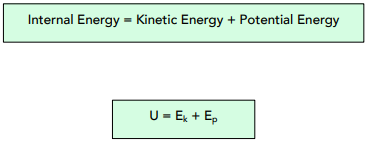
Where:
- internal Energy (U) = Joules, J
- kinetic Energy (Ek) = Joules, J
- potential Energy (Ep) = Joules, J
Heating the System
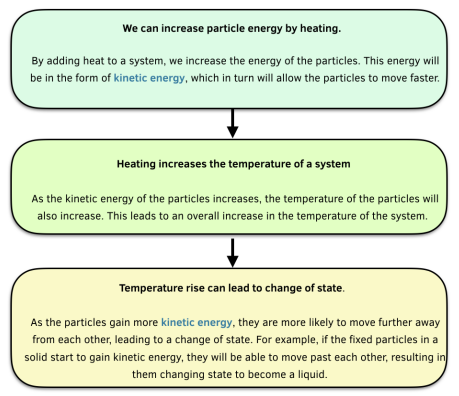

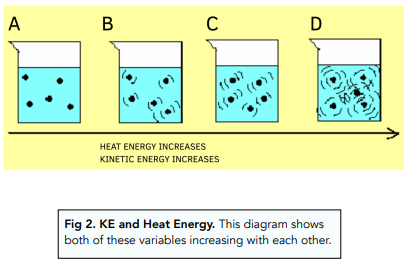
Thermal Expansion
Thermal Expansion
Thermal expansion happens when a material is heated and molecules begin to move round, causing the material to increase in size.
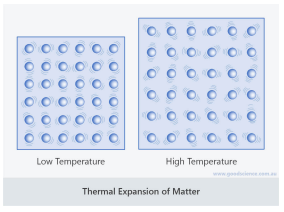
Magnitude of Expansion
Different substances take up varying amounts of space when heated. This depends on the amount the substance expands.
- Solids. Solids have a small relative magnitude of expansion. The molecules vibrate but stay in place, therefore the solid does not increase in size.
- Liquids. Liquids have a larger relative magnitude of expansion. The molecules within a liquid have some room to move, so the liquid can expand more.
- Gases. Gases have the greatest relative magnitude of expansion. The molecules can move very far apart, so gases can expand the most.
Applications
- Bimetallic strips – can be used to form temperature activated switches in circuits. They are made of two different metals, meaning one metal will expand faster than the other. This causes the strip to bend at a given temperature and close the circuit, allowing a current to flow.
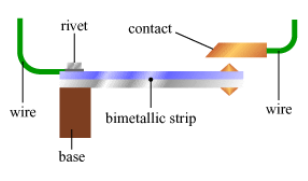
- Thermometers – in liquid-in-glass thermometers, the liquid expands as the temperature increases and rises up the glass. We will cover thermometers in more detail later.
Consequences
- Railway tracks – the tracks can expand during cold weather and buckle during hot weather. Therefore, gaps are kept between the tracks so they have room to expand into.
- Bridges – special expansion joints are fitted to allow bridges to expand and contract without bending out of shape.
The energy of particles refers to the amount of energy that is possessed by individual particles, such as atoms or molecules, in a substance.
Temperature is a measure of the average kinetic energy of the particles in a substance. The higher the temperature, the faster the particles are moving, and the more energy they possess.
Thermal energy is the total energy of all the particles in a substance. It includes the kinetic energy of the particles, as well as any potential energy due to the positions of the particles.
Heat is a form of energy that is transferred between objects due to a difference in temperature. Heat flows from hotter objects to cooler objects, and can be transferred through conduction, convection, or radiation.
Specific heat capacity is the amount of heat required to raise the temperature of one unit of mass of a substance by one degree Celsius. It is a measure of how much energy a substance can store for a given temperature change.
The energy of particles affects the state of matter by determining how closely packed the particles are, and how much they are moving. At higher temperatures, the particles have more energy and move faster, causing them to expand and become less dense. At lower temperatures, the particles have less energy and move slower, causing them to contract and become more dense.
Changes of state, such as melting, boiling, or condensing, are caused by changes in the energy of particles. When a substance gains energy, the particles move faster and the substance may change from a solid to a liquid, or from a liquid to a gas. When a substance loses energy, the particles slow down and the substance may change from a gas to a liquid, or from a liquid to a solid.
Knowledge of energy of particles can be applied in many areas, such as cooking, heating and cooling systems, and manufacturing. Understanding the energy requirements of different substances can help us to develop more efficient and sustainable energy systems, and to create new materials with specific properties.





Still got a question? Leave a comment
Leave a comment